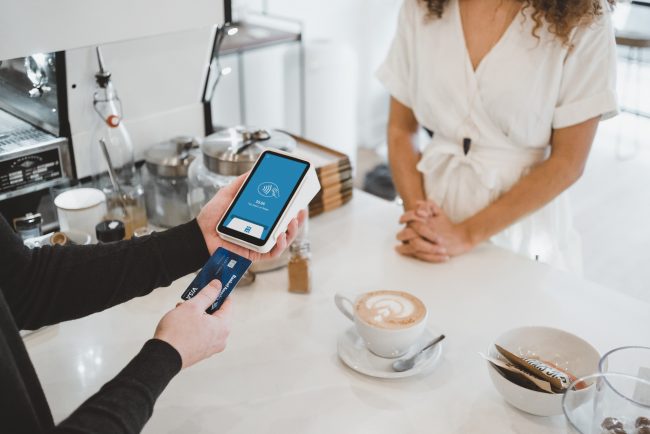
Technology is changing the retail market more than ever before. As retailers are looking to keep up with tech-savvy consumers, they struggle with too many tech trends and not enough time or resources. If you’re a retailer, it’s important to know what tech trends will be most effective for your business to stay competitive and relevant. Here we discuss seven main technological trends that have impacted the retail industry over the past few years.
ID Scanner Apps
One of the main tech trends in today’s retail market is the rising use of ID scanner apps. These apps are used to check the authenticity of products by scanning information directly from a barcode or QR code.
Retailers who use these scanner apps can ensure that they’re selling authentic items, avoid getting scammed out of money on fake goods, and protect their brand reputation.
However, there has been some controversy surrounding these apps because of privacy concerns. Internet security experts have pointed out that some ID scanner apps are connected to online databases with personal information about the individual scanning their product. This could potentially put consumers at risk if their data is hacked into or sold without consent.
However, you’ll have little to worry about concerning the security of your data when using a data scanner app from a reputable company.
Augmented Reality (AR) and Virtual Reality (VR)
These are arguably two of the most popular new technologies retailers can use to engage their customers and improve sales. Retailers who embrace AR and VR will be able to provide a more immersive experience for consumers, which they’re sure to love!
Augmented Reality allows users to interact with virtual objects in real-life settings by projecting images onto real-life surfaces (e.g., walls). On the other hand, virtual reality is an artificial environment that users can interact with through sensory stimuli (e.g., sight and sound), much like in a dream.
Both of these technologies will result in more engaging shopping experiences for consumers and higher sales for retailers.
Mobile Payments
Popular mobile payment options such as Apple Pay and Android Pay have unique design elements making them more convenient for consumers to purchase while shopping. There’s no doubt that mobile payments will continue to grow in popularity.
Blockchain is one of the mobile payments technologies that are quickly gaining root in the retail industry. It is a technology that allows retailers to sell directly to consumers and bypass the middleman.
Blockchain is like a distributed ledger that holds records of transactions, which are stored in blocks. Every transaction has an identifier (e.g., timestamp) and two keys; one public key for encryption and another private key for decryption.
One thing Blockchain technology will do is provide consumers with better protection against identity theft.
Voice Recognition Software
A voice recognition software allows customers to make purchases and pay for them straight from their smartphones, which reduces line wait times at brick-and-mortar stores. It also provides convenience by allowing users to purchase items without entering information like credit card numbers into a website or an app on their phones.
If you worry about the risk of your financial data getting hacked, voice recognition software can help minimize the chances of your data leaking to cybercriminals.
Retailers can also have an easier time generating new revenue streams with voice recognition software because it allows them to sell more items on their websites or apps simultaneously.
With more users moving towards online shopping, one can expect that this trend will continue to grow in the future as well.
Big Data Analytics and Artificial Intelligence (AI)
Another major technological development currently taking place in the retail industry involves big data analytics and AI.
With big data, retailers can review their pricing data to arrive at an optimal price range for their products. For example, some e-commerce businesses use AI to improve their online pricing algorithms so that they always offer the same goods at 10% cheaper than Amazon’s prices.
Retailers are also using AI to create more personalized shopping experiences. For example, retailers can use facial recognition technology on their websites or apps to show users items they have previously viewed online and liked after learning about the user’s preferences through big data analytics.
Both AI and big data analytics will help retailers improve their failing supply chains by gathering data on what goods are selling, how much they cost to produce and ship, and when demand peaks for different products.
This will allow retailers to better predict future trends in the market and optimize their inventory management systems. Doing so will enable them to have just enough of each product available without having too many leftovers or being caught empty-handed.
Delivery Robots
Delivery robots are another remarkable technological advancement in the retail industry. In most cases, they are expected to deliver goods within 30 minutes of receiving a customer’s order without needing human assistance. This way, they help reduce shipping costs and wait times for customers while cutting down on emissions from vehicles used in courier services.
These delivery robots are highly popular in colleges, making them common in retail stores near colleges and campuses. With the rising need for the prompt delivery of goods, the future of delivery robots seems to be a promising one.
Internet of Things (IoT)
IoT is the technology that connects objects from different devices to facilitate quick transactions. It is used for inventory management and tracking customer behavior in retail stores, which helps sellers identify their target audience much better than before.
Another way this technology is applied in the retail sector is the RFID tags. These tags are placed on the products to make it easier for customers and employees to cross-reference inventory information.
IoT is majorly recognized as one of the new ways people can use technology to change the world into a better place to live in. Retailers can tap into the extensive aspects of IoT to achieve tremendous breakthroughs in their businesses.
Whether you’re just getting started with your retail business or you’re a customer looking for a better shopping experience, these technological trends should help make things easier for you. When applied correctly, they can work to improve the quality of your business and help you gain a competitive edge.
